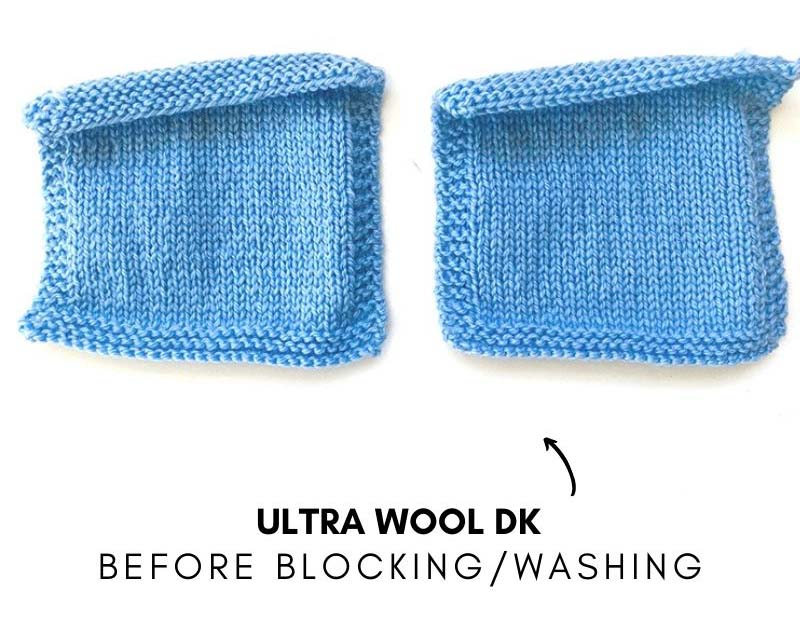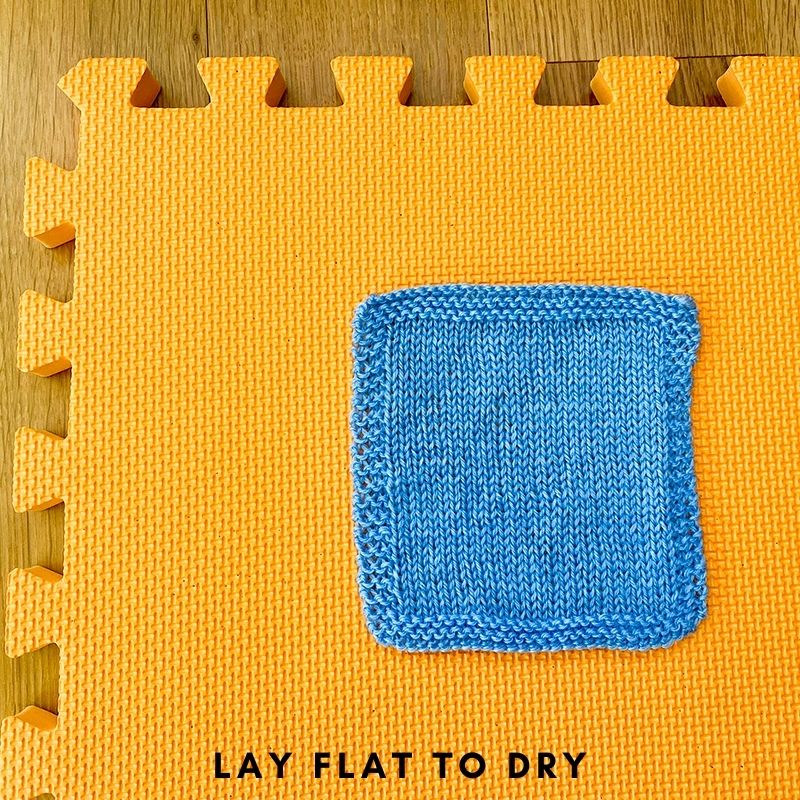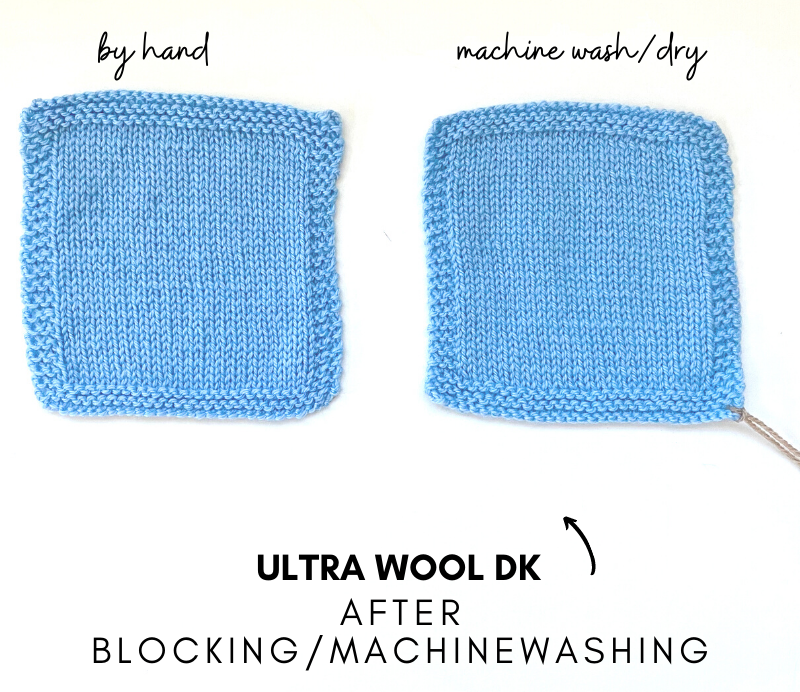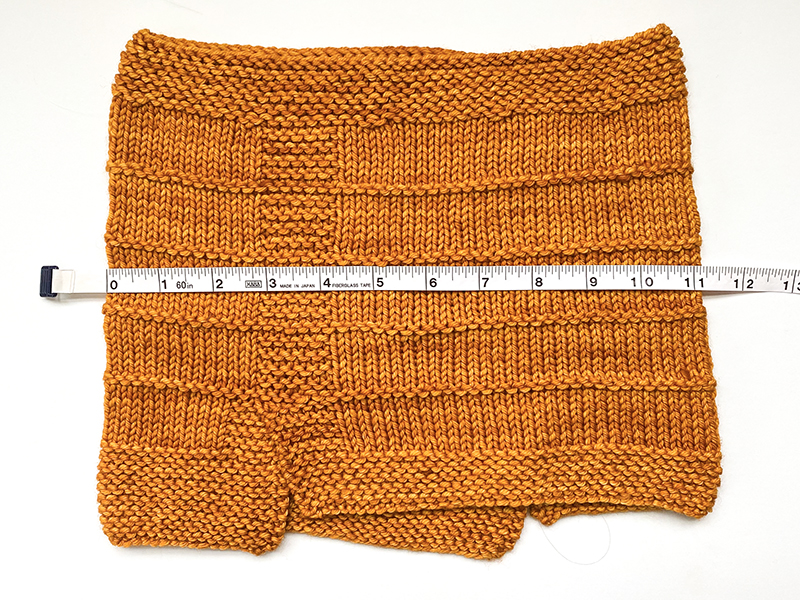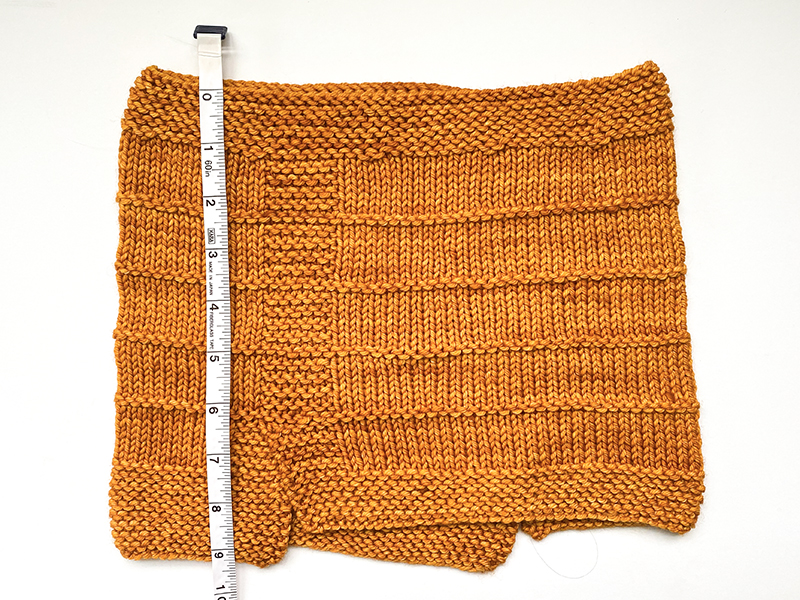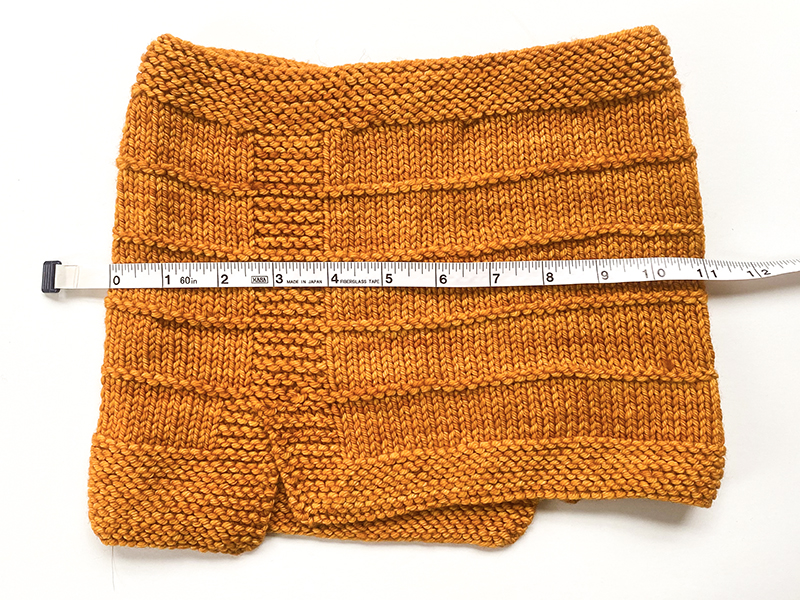A common question I receive is “Can I machine-wash my finished knits if I used superwash wool?” I get asked this a lot because although superwash means the fiber has been treated in such a way that it won’t felt when you machine wash it, a lot of knitters are still hesitant to machine-care for their knits. And I completely understand this hesitancy because I myself have felt it before too. I would steer away from machine-washing superwash just because I feared it would fuzz the fabric too much or distort it in some other way. But superwash can indeed be put through the washing machine (so long as the yarn label recommends it of course!) But how does it compare to hand-washing/blocking? To answer this, I decided to run my own experiment, comparing hand-washed with machine-washed (and dried) superwash swatches! Keep reading to learn all about my experiment and the final results.
The Yarn
I used 2 different types of superwash wool yarns for my experiment – Ultra Wool DK by Berroco and Rios by Malabrigo. For each of these yarns, I knit two identical swatches and measured my pre-block gauge. Then I hand wet-blocked one of the swatches and the other was machine washed/dried. Then I measured my post-block gauge for both and compared notes. What did machine washing do to the swatch? How did the fabric look compared to hand-washing? Let’s see.
The Un-Blocked Swatches
Here are my swatches before any kind of blocking/washing and what their stitch and row gauge was:
Method 1: Hand Wet-blocking
I took one of each of the yarn’s swatches and wet-blocked them. That means soaking them in water for 15 minutes, then taking it out of the water and rolling in a towel to get out the excess wet, and then laying flat to dry on a blocking tile (you can read more about my swatch blocking process here).
Method 2: Machine Wash & Tumble Dry Low
Then I took the other swatch of each yarn, put it in a mesh bag and machine washed (cold water/gentle cycle). I had read that the mesh bag is good just to protect it from agitation. Then, keeping it in the mesh bag, I put it in the dryer, on tumble dry low (checking it often).
An important note: When the swatches were in the dryer, I kept checking on them to see how they were looking/feeling. The fabric looked fine but because it started to look a little wrinkly as it was closer to drying completely, I decided to take them out when they were still a little damp so that I could lay it flat to get the wrinkles out and let it finish drying that way. Alternatively, you could steam them a bit afterwards to get the wrinkles out.
After Machine Washing & Drying:
So how do they look? I was pleasantly surprised by my washer/dryer swatches. They looked similar to my hand wet-blocked swatches in terms of the fabric. To differentiate between the two methods, I tied some scrap yarn to the “Machine Wash/Dry” swatches:
But here is the BIG question. What was the gauge of these post-blocked/dried swatches and how did they compare to each other? Did the machine washed/dried swatches come out smaller/tighter? Here’s my stats…
Gauge Stats:
ULTRA WOOL DK
- Before blocking/washing: 22 sts & 30 rows = 4″
- After wet-blocking/lay flat to dry: 21.5 sts & 29 rows = 4″
- After machine wash/dry: 22 sts & 30 rows = 4″
Result: Hand wet-blocking grew the swatch both in width and in length while machine washing/drying kept it the same.
RIOS
- Before blocking/washing: 18 sts & 26 rows = 4″
- After wet-blocking/lay flat to dry: 18 sts & 25.5 rows = 4″
- After machine wash/dry: 18 sts & 26.75 rows = 4″
Result: Both swatches didn’t change much width-wise but the hand wet-blocking swatch grew a little bit in length while the machine washed/dried swatch shrunk a little bit in length.
What does this all mean?
To sum it up, this experiment showed a few things:
- In general, compared to hand wet-blocking, machine washing/drying did help to prevent the over-growth that can typically happen with superwash.
- Each superwash may react differently. It’s important to test your own superwash before and after machine-washing/drying to see how it will react.
- These are just swatches and not full garments, so I would expect the length (row gauge) would likely grow more when hand wet-blocking than my swatches showed in this experiment. But it also showed that, should this over-growth happen, putting it in the dryer could assist with shrinking it back.
One More Example: Low-Key Cowl
I decided I wanted to take this experiment a bit further. The above was just swatches – how would a larger knitted piece compare? I had a few versions of my Low-Key Cowl knit up already and decided to use one of them as an additional experiment. I had previously already hand wet-blocked and dried the one below (6 months ago) – this is how it measured up:
Then I put it in a mesh bag and into the washing machine it went just like I did with the swatches (delicate cycle, cold water). Then I put it in the dryer, on tumble dry low, checking it periodically. Here is how it measured up afterwards:
Width-wise, it went from 11 1/8″ to 11″ (so it shrunk by about 1/8″). Lengthwise, it went from 9 1/4″ to 9″ (so it shrunk by about 1/4″). This confirmed to me that, should you have a Rios piece that is a bit bigger than you hoped, then putting it in the dryer may indeed help to shrink it up a bit.
Conclusion
By conducting these experiments I not only got to see for myself how these particular yarns reacted to machine washing and drying but also how they measured up and compared gauge-wise to their hand-blocked counterparts. Will it change how I block superwash knit pieces in the future? I think with most superwash yarns I will likely still hand wet-block, or perhaps machine wash but then lay it flat to dry. I do find that letting it dry on the blocking tiles creates crisper edges and more control over the final shape. But now (thanks to this experiment) I know that I can indeed put it in the dryer for a bit if I ever experience a post-blocking “over-growth”. I hope seeing this information has been helpful to you as well 🙂
And as one final side-note: Please make sure to read your yarn labels carefully before you decide to give machine-washing a try. Every yarn can be different and if it’s not superwash, it will definitely felt! If your yarn says it can be machine-washed, it’s a good idea to test it out on a swatch first just like I did in this experiment.



